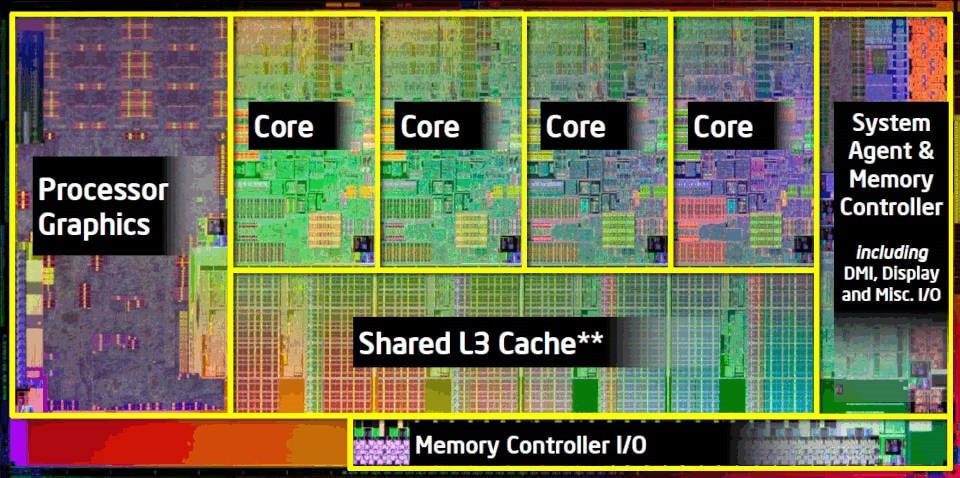CPU cores and threads, what they are and what the differences are
Every time we check the performance of a computer we hear about CPU cores and threads.
But what exactly do these two terms mean? How many CPU cores do you need to have? And how many threads?
What is the ideal relationship between one and the other? What is the ideal CPU core count?
Definition of CPU Core

The core is a physical component of the CPU . We can consider the core as the smallest processing unit capable of carrying out the calculations necessary to perform a task.
Definition of thread
The thread is not a physical component, but a command. The thread is the smallest part of an executable code, a single operation or calculation. Threads are part of a process, a set of instructions that can perform multiple functions at the same time.
As a result, multiple threads can run, even simultaneously on a single core processor.
Difference between core and thread
But in operational and exemplary terms what is the difference?
One of the most visually effective yet simple to understand examples borrows from the human body.
We can therefore imagine the core as a mouth and the threads as the hand (or fork) that feeds it.
In our example, when the computer is activated, the CPU is asked to feed itself with food. What happen?
Core mouth starts chewing. At the same time the two thread hands begin to bring food to the same one. Our ideal cycle then begins.
But what if I needed to increase the speed of this process?
The first thought would be to add a mouth (core), in order to increase the speed of chewing (processing). But this would be a mistake, because those who bring the food (threads) would always be the same. Therefore the processing speed will remain the same.
Consequently, if I increase the cores (the mouths) by doubling them, I should also double the hands (threads). In this way I would maintain the calculation proportions and consequently the processing speed.
So, if you want the CPU to run at the highest possible efficiency I will have to try to maintain a 1:2 ratio, i.e. two threads for each core.

“Basic” differences between CPU cores and threads
In summary we can identify four fundamental differences between CPU cores and threads:
What is multithreading and how does it work?
This term indicates the division and parallel processing of multiple threads within an operating system.
Multithreading consists of multiple and "simultaneous" work activities performed by the CPU . The basic example is the CPU performing the requested processing or loading while at the same time another thread visually takes care (via an hourglass or progress bar) of showing us the status of the operation.
What is CPU and what are Cores? 
The processor of a computer (but the same thing also applies, but not only, to a tablet or smartphone), is the operational center of the entire system. The CPU is the chip that processes information, runs programs and controls all other components of the system. We can therefore consider the processor as the brain of our computer. A brain of limited dimensions which however does not avoid the "subdivision" of the same into smaller components.
These are the Core (in Italian nuclei or hearts). Therefore the cores are the basic nucleus of the processor's activity, "those" who are responsible for executing the program code.
We can usually find two processor-core solutions. The "oldest" is the one called single-core, in which a CPU corresponds to a single processing core. Then we find the more "modern" one known as multi-core.
In this second configuration, as can be seen from the name, for a single processor we find multiple cores.
Single core CPU issues
The single core CPU presents a significant operational problem when the need is to improve and increase performance.
To follow processing tasks faster you need to increase the clock frequency.
This "acceleration" causes an increase in energy consumption and heat production, with very sophisticated and invasive dissipation requirements. In fact, if the processor is not cooled correctly, it will become inefficient.
 How does Multi-Core solve the problem and what advantages does it bring?
How does Multi-Core solve the problem and what advantages does it bring?
The Multi Core solves the problem by creating two or more cores on the semiconductor chip in order to increase the processing power and at the same time maintain the clock speed effectively.
Therefore, a dual-core processor (for example) will be able to process instructions efficiently, with double the clock speed but lower energy consumption.
The advantages of multi-core are therefore essentially a greater number of transistors, a reduction in the length of the connections and an optimization of the entire process.
Number of CPU cores
The number of cores on a "multi" CPU varies based on the configuration and construction technology of the CPU.
Currently we find Dual-Core, Quad-Core, Six-Core, Octa-core and Multiple-core CPUs.
How to choose the best CPU for your needs?
There are various parameters to consider and evaluate to choose the CPU best suited to your needs. In particular:
Brands
Amd or Intel? From a technical point of view, the two platforms with the same model are equivalent. Often the determining factor for the choice is therefore the price, with AMD usually having a slight advantage in this area.
Intended use
Of course, if you don't have budget limitations you can opt for the best performing model, but in the vast majority of cases it is better to choose something "suitable" for your use.
For an "office use" machine we can therefore opt for a basic model, while we will have to look for something more advanced for gaming or creative activities.
Therefore, the best CPU is often the result of a careful vision of the possible use of the machine and the components that will be mounted on it.
The ideal is therefore to start from a budget and allocate the "largest" resources to the most important components (video card, RAM, hard disk) and only then, based on what has been hypothesized for these, choose the best CPU .











